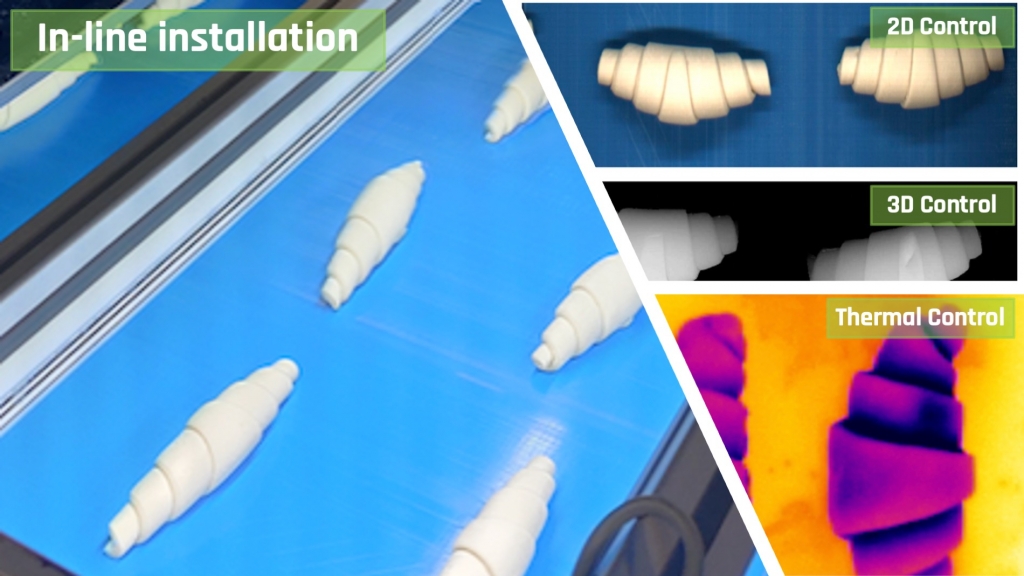In-line Temperature Control in the food industry: the vital role of thermal imaging cameras
Thermal imaging cameras are crucial in the food industry for precise temperature control in the production line. When combined with SENSURE SYNAPSE software, they identify thermal issues, detect temperature parameters, and enable product rejection of non-compliant products.
Thermal imaging cameras play a vital role in the food industry, ensuring precise temperature control. These cameras enable automatic, contactless temperature measurements in the different steps of the production process and in various food processing scenarios, such as oven-baked, fried, and frozen goods
Subsequently, the temperature data for the controlled products is promptly displayed, allowing for efficient and convenient monitoring. These user-friendly and compact thermal cameras offer flexibility in positioning to meet specific operational needs: they can be installed using the same housings as traditional 2D cameras, even leveraging the same mechanical frame used in the line for the installation of other vision technologies (when presents).
These cameras provide comprehensive insights by detecting various temperature-related parameters for each product, including minimum, maximum, and average temperatures. They also identify areas within products that deviate from specified temperature thresholds.
The information captured in the field through thermal cameras is stored in an SQL database along with other products information (shape, size, color, etc.) from different vision technologies. For comprehensive monitoring and control of the process, data from the process itself can also be managed (oven or fryer temperatures, conveyor belt speeds, freezing or cooling temperatures, etc).
These functionalities enables the identification of non-compliant products, facilitates data storage, and supports process optimization.
Furthermore, in addressing non-compliant products, a range of rejection technologies can be installed. The choice of rejection method is adaptable, considering factors such as product size, line speed, and available space. This multifaceted approach ensures a tailored solution for rejecting non-compliant products, contributing to overall quality control. For more in-depth information on these rejection technologies and their application, refer to the provided link (click here).
